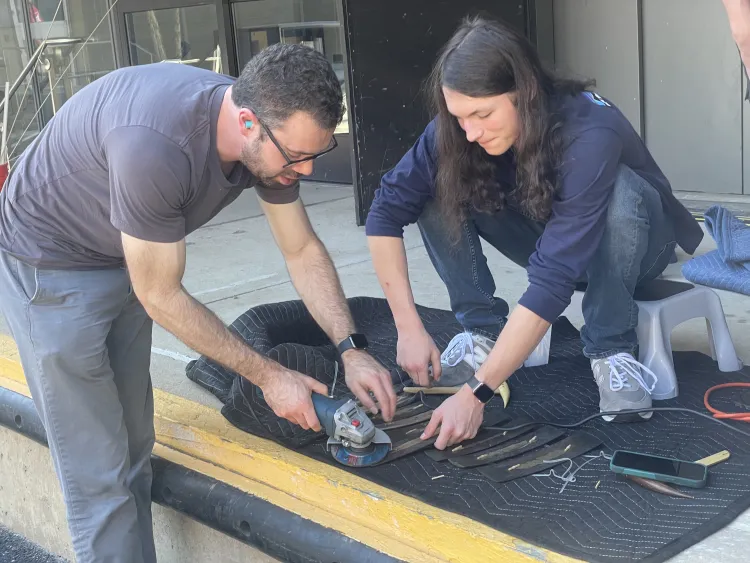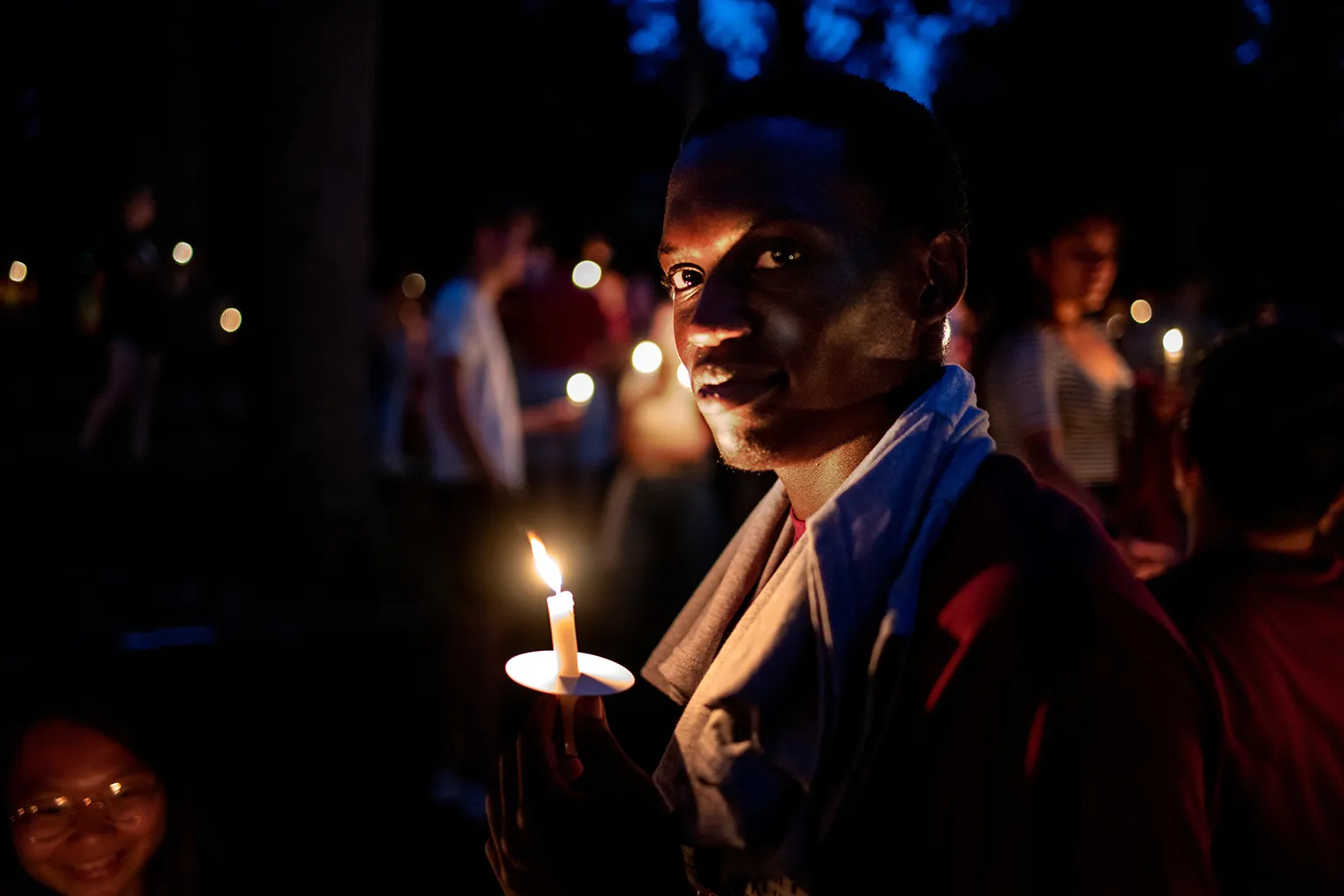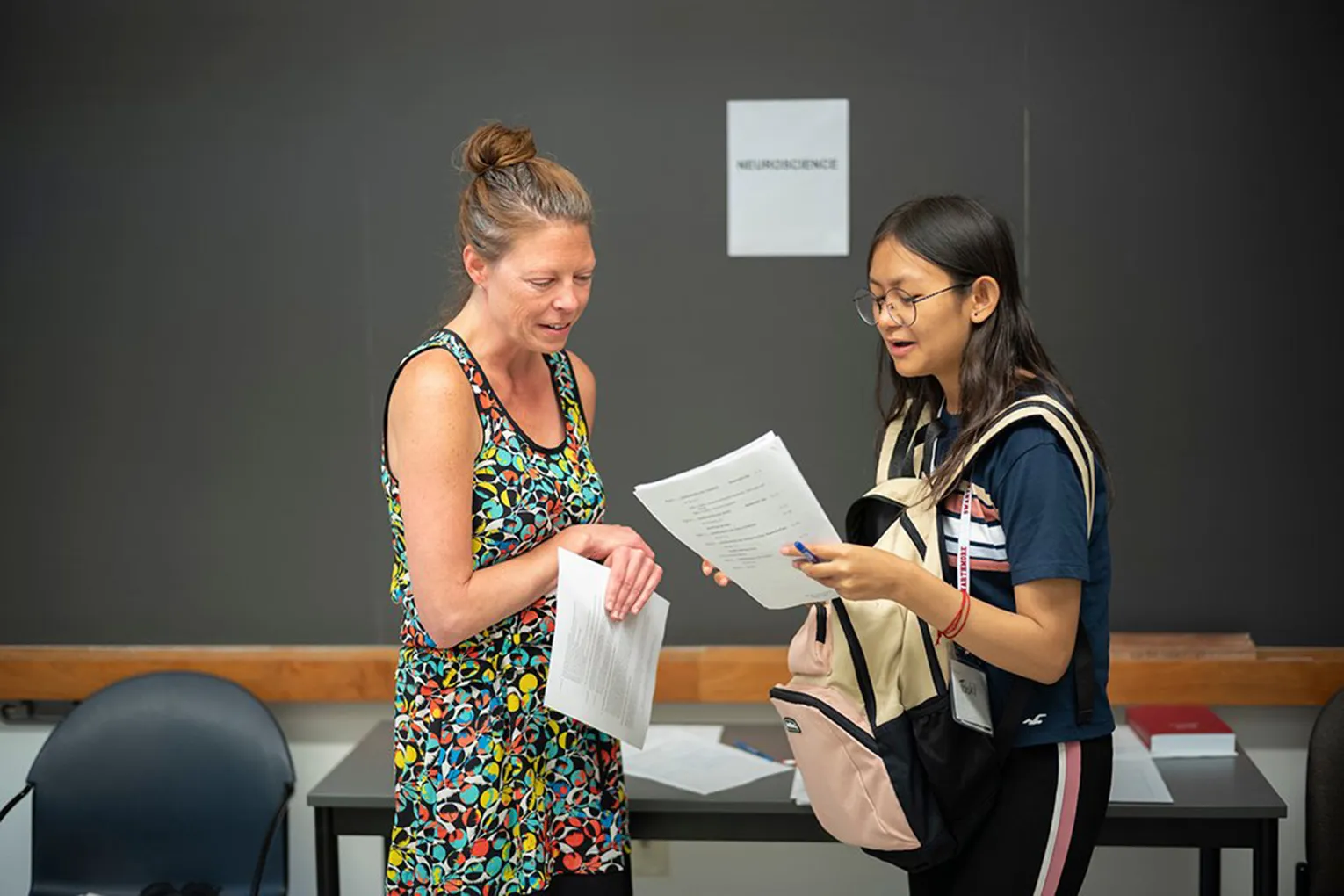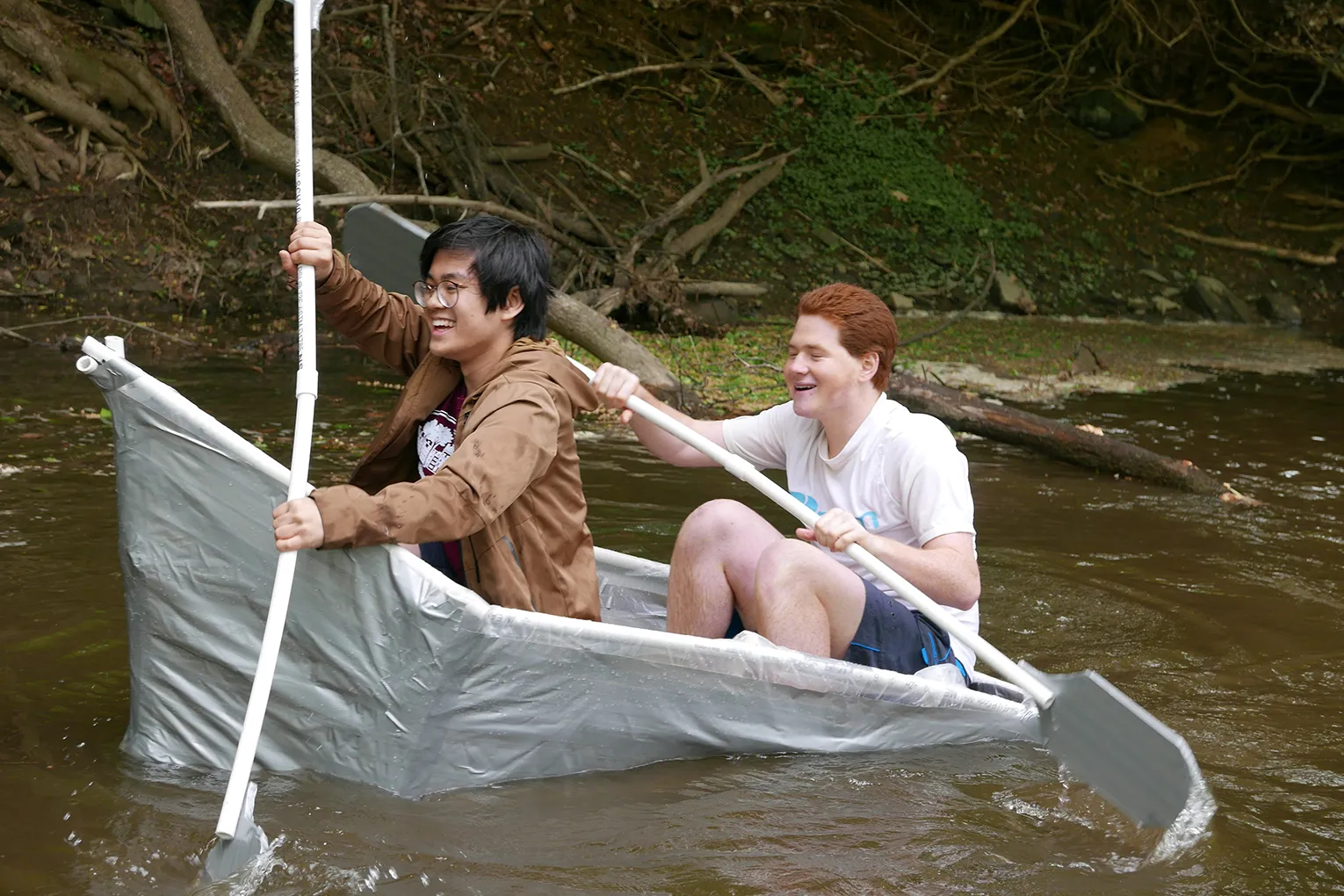Gamelan Instruments Undergo Special Tuning Process

Ethnomusicologist Dr. Tyler Yamin (left) and student assistant preparing to tune Gamelan instruments
On Sunday, October 5th, ethnomusicologist Dr. Tyler Yamin and a group of his students from Bucknell University visited Swarthmore to tune the instruments of the college’s Balinese Gamelan ensemble. The event, hosted by Swarthmore’s Department of Music, brought together students, faculty, and staff with members of Philadelphia’s Indonesian-American community to observe and participate in the unique tuning process.
Swarthmore’s Gamelan Semara Santi orchestra was founded by Professor Tom Whitman in 1997, the Philadelphia area’s only Indonesian percussion ensemble devoted exclusively to the performance of traditional Balinese compositions at the time. The group’s instruments, a combination of gongs and melodic percussion instruments similar to vibraphones, were custom built in the same year by Balinese musician and craftsman I Wayan Beratha. Since then, Gamelan Semara Santi has performed at the Kimmel Center for the Performing Arts, The Philadelphia Shakespeare Theater, Carnegie Hall, and other venues across the country. Their instruments have been repaired and re-tuned only twice in that time, on both occasions by distinguished Balinese artisans.
Professor Whitman explains that both the physical nature and the cultural significance of the Gamelan instruments make the re-tuning process special.
“An element that’s quite unique to Balinese Gamelan is that almost all of the instruments are created in pairs. You’ve got two instruments playing the same [note]: one is slightly ‘lower’ in Western terms, and one is slightly ‘higher.’ If you’ve heard Balinese Gamelan, you’ve probably noticed that any note has a brilliant kind of ‘shimmer’ to it. The interference pattern between the two instruments in the pair is what makes that sound.”
Over time, a combination of metal fatigue, oxidization, and humidity-induced warping cause the frequencies of the instruments’ notes to drift. As two paired instruments grow farther apart in pitch, the ‘shimmering’ effect gives way to something much less pleasing to the ear.
“Even the newcomers can hear it,” says Professor Whitman, laughing. “They’ll play a note and say, ‘gosh, that really doesn’t sound right.’”
Fixing this problem isn’t as simple as re-tuning a faulty note or two. Unlike the Western tonal order, the Balinese musical system doesn’t rely on any fixed, absolute frequencies. Rather, the instruments in a Gamelan ensemble are tuned according to relative pitch: notes are defined by their distance from one another, rather than from any universal metric. Even these relative distances aren’t standardized. Each tuning specialist, Professor Whitman says, creates a distinctive tonal palette based on their own preferences and intuitions.
“It’s a kind of signature – a marker of an artist or a community.”
The achievement of this unique sound requires a combination of musical, technical, and spiritual expertise. A single instrument is chosen as a point of reference, and the remaining pieces of the ensemble are continuously altered until the tuning master feels that the entire orchestra is in harmony. This process consists of the painstaking shaving and grinding of the instruments’ metal keys; the tuners work with such meticulous care not only because misdirected shaving risks permanent damage to the instruments, but because bronze (the material from which Gamelan instruments are made) is considered sacred in Indonesian culture. According to the Balinese tradition, a bronze object stores the souls of all those who have possessed it. The tuning process isn’t a mundane chore, but a powerful form of spiritual communion.
For the visitors from Bucknell, the event provided an opportunity to expand on their ethnomusicological knowledge through hands-on experience. They assisted Professor Yamin with the tuning as a component of an advanced course on instrument-making, commenting that Yamin immerses himself in his work and encourages them to do the same. Professor Whitman added that this element of the collaborative event was the primary reason he decided to partner with Professor Yamin’s class.
“He came to me right away with this idea that he would make it a class project. That was when I knew he was the right person. Learning opportunities like these are what we’re all about here at Swarthmore.”
Swarthmore’s Gamelan Semara Santi ensemble will perform at the Lang Music Concert Hall on November 23rd at 3pm. Visit the Concerts & Events section of the Music Department’s website to learn about other upcoming opportunities for musical entertainment, engagement, and education.



